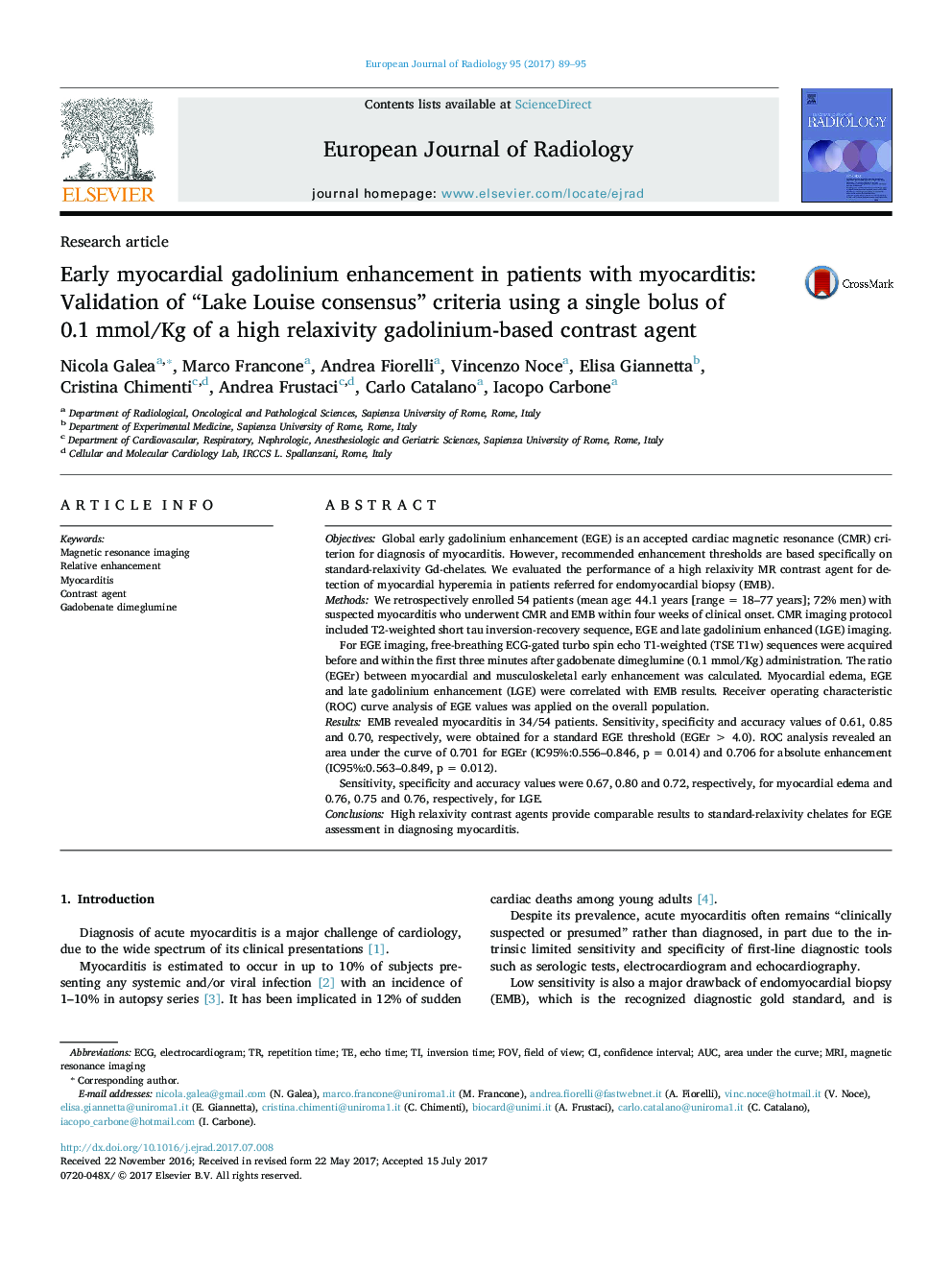| Article ID | Journal | Published Year | Pages | File Type |
|---|---|---|---|---|
| 5725985 | European Journal of Radiology | 2017 | 7 Pages |
â¢Myocardial early gadolinium enhancement is a MRI criterion to diagnose myocarditis.â¢EGE thresholds suggested by “Lake-Louise” consensus refer to conventional standard-relaxivity Gd-chelates.â¢High relaxivity contrast agents offer comparable results to standard-relaxivity Gd-chelates.â¢EGEr threshold implemented using standard-relaxivity chelates may be applied using Gadobenate dimeglumine.â¢EGE is the weakest MRI parameter for diagnosing myocarditis.
ObjectivesGlobal early gadolinium enhancement (EGE) is an accepted cardiac magnetic resonance (CMR) criterion for diagnosis of myocarditis. However, recommended enhancement thresholds are based specifically on standard-relaxivity Gd-chelates. We evaluated the performance of a high relaxivity MR contrast agent for detection of myocardial hyperemia in patients referred for endomyocardial biopsy (EMB).MethodsWe retrospectively enrolled 54 patients (mean age: 44.1 years [range = 18-77 years]; 72% men) with suspected myocarditis who underwent CMR and EMB within four weeks of clinical onset. CMR imaging protocol included T2-weighted short tau inversion-recovery sequence, EGE and late gadolinium enhanced (LGE) imaging.For EGE imaging, free-breathing ECG-gated turbo spin echo T1-weighted (TSE T1w) sequences were acquired before and within the first three minutes after gadobenate dimeglumine (0.1 mmol/Kg) administration. The ratio (EGEr) between myocardial and musculoskeletal early enhancement was calculated. Myocardial edema, EGE and late gadolinium enhancement (LGE) were correlated with EMB results. Receiver operating characteristic (ROC) curve analysis of EGE values was applied on the overall population.ResultsEMB revealed myocarditis in 34/54 patients. Sensitivity, specificity and accuracy values of 0.61, 0.85 and 0.70, respectively, were obtained for a standard EGE threshold (EGEr > 4.0). ROC analysis revealed an area under the curve of 0.701 for EGEr (IC95%:0.556-0.846, p = 0.014) and 0.706 for absolute enhancement (IC95%:0.563-0.849, p = 0.012).Sensitivity, specificity and accuracy values were 0.67, 0.80 and 0.72, respectively, for myocardial edema and 0.76, 0.75 and 0.76, respectively, for LGE.ConclusionsHigh relaxivity contrast agents provide comparable results to standard-relaxivity chelates for EGE assessment in diagnosing myocarditis.
